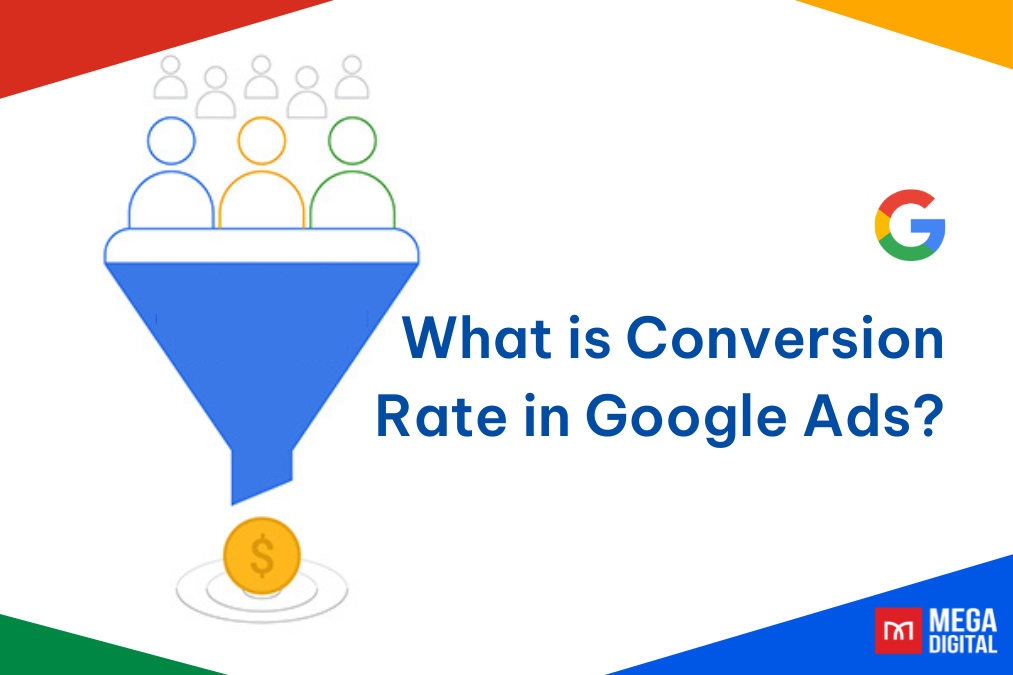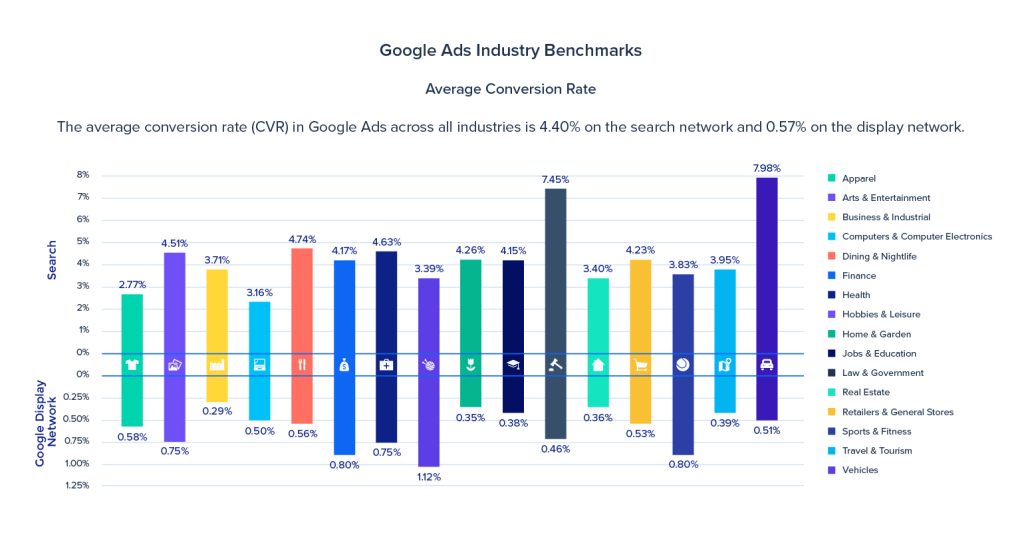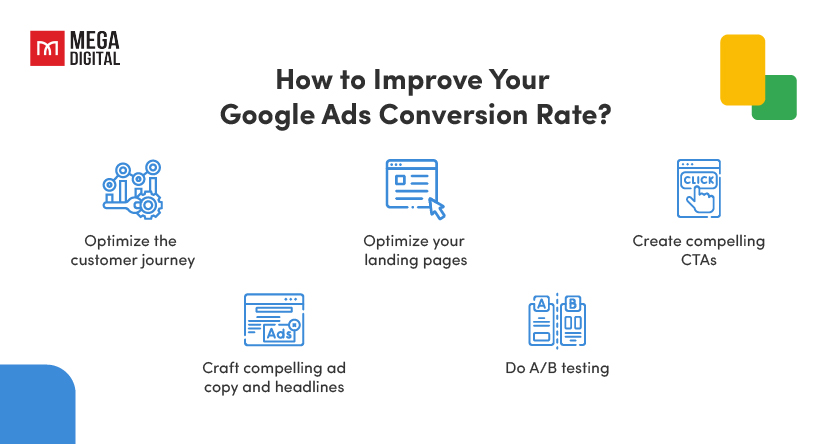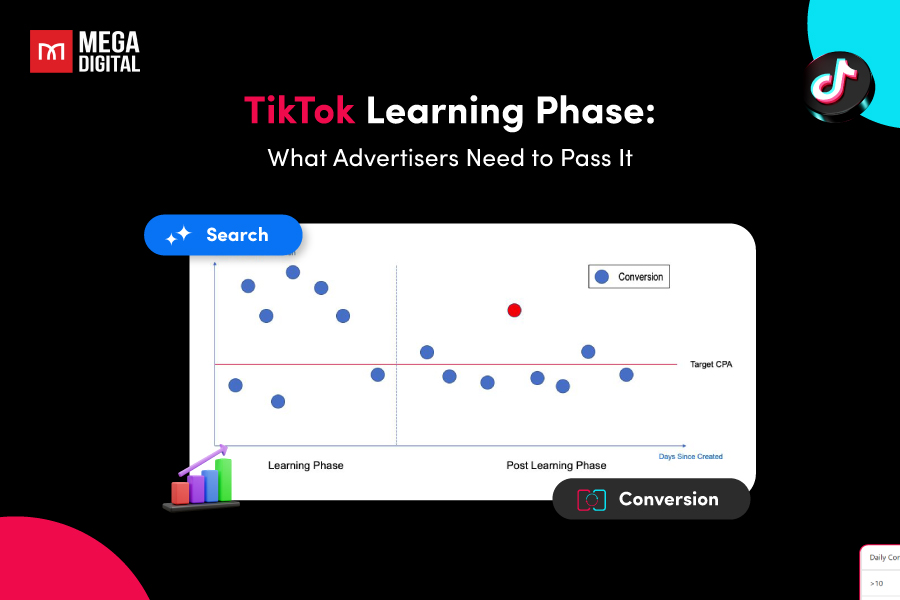When it comes to Google Ads, the conversion rate can provide valuable insights into how effectively your ads are driving desired user actions. Whether you’re a seasoned marketer or a small business owner new to online advertising, this blog post will delve into the intricacies of Google Ads conversion rates, offering a comprehensive look at the latest industry data, trends, and strategies to optimize your campaigns.
What is Conversion Rate in Google Ads?
Google Ads conversion rate is a metric that measures the effectiveness of your advertising campaign. It is calculated by dividing the number of conversions (desired actions) by the number of ad clicks. For example, if your ad receives 100 clicks and 10 of those clicks end up being a sale, your conversion rate is 10%. Essentially, it tells you how well your ad is performing.

Monitoring the conversion rate of your Google Ads is crucial as it helps you identify the keywords and phrases your customers use to locate your products or services. This insight can significantly enhance your other marketing strategies.
A high conversion rate for your Google Ads usually signifies effective targeting, persuasive ad copy, and an appealing offer to your customers. Conversely, a low conversion rate may indicate that certain elements of your campaign are not performing as expected. In such cases, consider revising your messaging, budget, or call-to-actions.
What can be considered a conversion in Google Ads?
In Google Ads, a conversion is counted when a user interacts with your ad (for example, clicks a text ad or views a video ad) and then takes an action you’ve defined as valuable to your business. This could include a variety of actions such as:
- Make an online purchase
- Sign up for a newsletter
- Sign up for a new account
- Fill out a contact form
- Book a call/demo
- Request a quote
These conversions are measured with conversion tracking and can be tracked across different surfaces such as mobile or desktop.
Google Ads Conversion Rate Formula
The conversion rate formula for Google Ads is simple: It’s the number of conversions divided by the total number of interactions. For example, if you had 50 conversions from 1,000 interactions, your conversion rate would be 5%.
What is a Good Conversion Rate for Google Ads?
The conversion rate serves as a vital metric in assessing the efficacy and efficiency of your ad campaigns, making it essential to distinguish between good and poor conversion rates.
Essentially, you require a benchmark to evaluate your conversion rate performance, allowing you to identify whether your conversion rate is high or low.
However, establishing this benchmark can be challenging. Several factors below need to be taken into account:
Type of conversion
The ease of achieving certain conversion actions varies. For instance, more individuals are likely to download a free eBook than to purchase a software tool worth $1,000.
Industry
Conversion rate standards fluctuate based on your industry. It’s advisable to research the average conversion rates within your specific industry.
Past Performance
In addition to comparing your conversion rates with other businesses in your industry, you can also examine how your conversion rates have either improved or declined based on past performance.
Value
While the conversion rate is a useful indicator of how effectively your ads prompt action from leads and customers, it’s not the ultimate goal. Your primary objective is sales and revenue. Therefore, it’s important to consider the value your conversions generate, irrespective of the rate.
The Average Conversion Rate for Google Ads
The average conversion rate for Google Ads varies depending on the industry and the type of campaign. However, across all industries, the average conversion rate across Google Ads is 4.40% on the search network and 0.57% on the Display network.
| Business Category | Avg. Conversion Rate (Search) (%) | Avg. Conversion Rate (GDN) (%) |
|---|---|---|
| Apparel | 2.77 | 0.58 |
| Arts & Entertainment | 4.51 | 0.75 |
| Business & Industrial | 3.71 | 0.29 |
| Computers & Electronics | 3.16 | 0.50 |
| Dining & Nightlife | 4.74 | 0.56 |
| Finance | 4.17 | 0.80 |
| Health | 4.63 | 0.75 |
| Hobbies & Leisure | 3.39 | 1.12 |
| Home & Garden | 4.26 | 0.35 |
| Jobs & Education | 4.15 | 0.38 |
| Law & Government | 7.45 | 0.46 |
| Real Estate | 3.40 | 0.36 |
| Retailers & General Stores | 4.23 | 0.53 |
| Sports & Fitness | 3.83 | 0.80 |
| Travel & Tourism | 3.95 | 0.39 |
| Vehicles | 7.98 | 0.51 |

It is easy to notice that the conversion rate on Google Search Networks tends to be higher than that on Display Networks due to the difference in user intent between the two networks.
On the Search Network, users are actively searching for a product, service, or solution. They have a specific intent and are more likely to convert when they find what they’re looking for. For example, if a user searches for “winter coats on sale”, and your ad matches their search, they’re more likely to click on your ad and make a purchase.
On the other hand, the Display Network consists of a set of third-party websites that show Google ads. Users on these sites are typically browsing the web or reading articles, not actively looking for a product or service. Therefore, while Display Ads can reach a large audience and are great for building brand awareness, they may not lead to immediate conversions.
If your conversion rate is higher than this, you’re doing well. If it’s lower, it might be time to optimize your campaigns.
>>> Read more: Google Ads Benchmarks 2023 by Industry [Original & Latest data]
How to Improve Your Google Ads Conversion Rate?
Improving your Google Ads conversion rate is a strategic process that involves several key steps. Here are some valuable strategies from Mega Digital to help you optimize your campaigns for a better conversion rate:

Optimize the customer journey
The customer journey should be seamless from the ad click to the conversion. This involves ensuring that your ads, landing pages, and conversion actions are all aligned with the user’s intent. For example, if your ad is about a sale on winter coats, the landing page should feature the winter coats on sale and the conversion action could be a purchase.
Optimize your landing pages
The page your visitors land on after clicking your ad plays a significant role in conversion rates. If a landing page is inaccessible or fails to load appropriately, potential leads who click on your ads are likely to revert to the Search Engine Results Pages (SERPs) almost instantly. This not only results in a lost business opportunity but also incurs a cost for the click.
Ensure your landing pages are relevant to your ad copy and offer, easy to navigate, and have a clear, intriguing call-to-action (CTA).
Read More: How to Create a Landing Page for Google Ads with Easy Steps
Create compelling CTAs
While “Sign up” or “Click here” are common CTAs and can be effective in the right context, they may not always be the most engaging or compelling for users. It’s often beneficial to use more descriptive and action-oriented CTAs that align with your specific offer or service.
For example, if you’re promoting a free ebook, instead of “Click here”, you could use “Download your free ebook now”. If you’re advertising a webinar, instead of “Sign up”, you could use “Reserve your seat today”. These CTAs are more specific, create urgency, and give a clear indication of what the user can expect after clicking.
Craft compelling ad copy and headlines
Your ad copy and headlines should be compelling and relevant to the user’s search query. This can significantly improve your click-through rate and, subsequently, your conversion rate. For instance, if a user searches for “winter coats on sale”, an effective ad headline could be “50% Off Winter Coats Now!”.
Do A/B testing
Sometimes, a subtle shift in word choice or visual format can significantly enhance your Google Ads conversion rate. A/B testing proves to be an effective tactic for uncovering impactful improvements in ad experiences. This method involves creating nearly identical ads or landing pages and then comparing the outcomes of each variation.
For example, you might want to measure the impact of incorporating a new video into your landing pages. You would divide your ad traffic between the current page and a new version that features the video. Then, you observe whether the addition of the video enhances your conversion rates.
Conclusion
In conclusion, understanding your Google Ads conversion rate is crucial to the success of your advertising efforts. By monitoring your conversions and optimizing your campaigns, you can improve your conversion rate and get the most out of your Google Ads.









